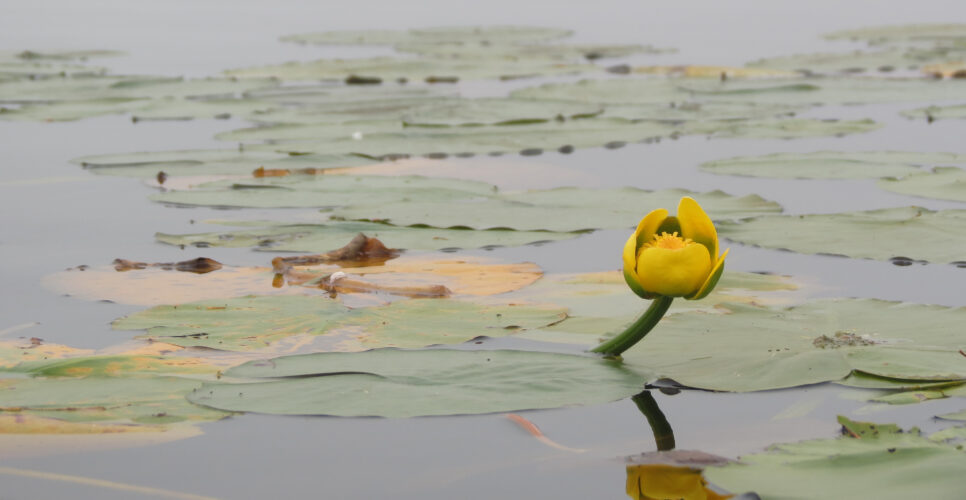Story and photos by Paul Skawinski, UW-Stevens Point Extension Lakes
Wisconsin’s water lilies and other lily pad-like species are commonly seen across the state, often with multiple species mixed together like a field of frog trampolines. At first glance, you might think they’re all the same, maybe with a mix of young and mature plants. But with a closer look, you’ll be able to identify each one and impress your wetland-loving friends.
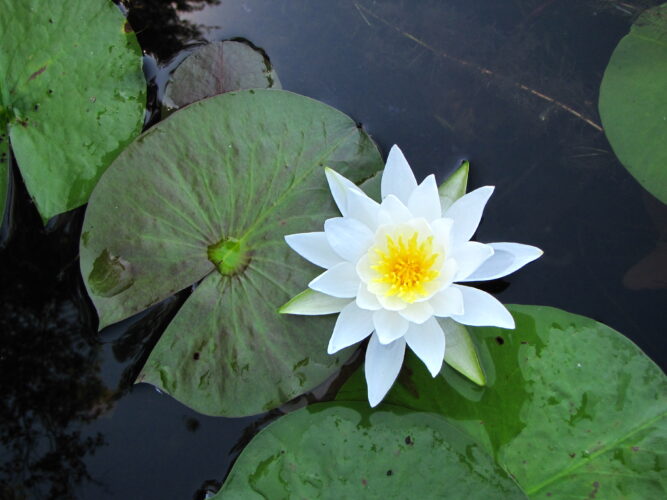
White water lily (Nymphaea odorata)
This is the iconic water lily that everyone would picture in their mind when hearing the name “water lily”. Wisconsin has only one species of Nymphaea (Nymphaea odorata), although it has two subspecies. Head northwest and you can find the rare pygmy white water lily (Nymphaea leibergii) in Minnesota and Canada, as well as on Isle Royale in Lake Superior. Water lilies in the genus Nymphaea have circular leaves with a notch/sinus in the leaf, almost like a pie with a slice missing. The beautiful and fragrant flower is white with a yellow center and contains many large petals. Water lilies with other colors of flowers occasionally show up in Wisconsin, but these are cultivars that have escaped or were released.
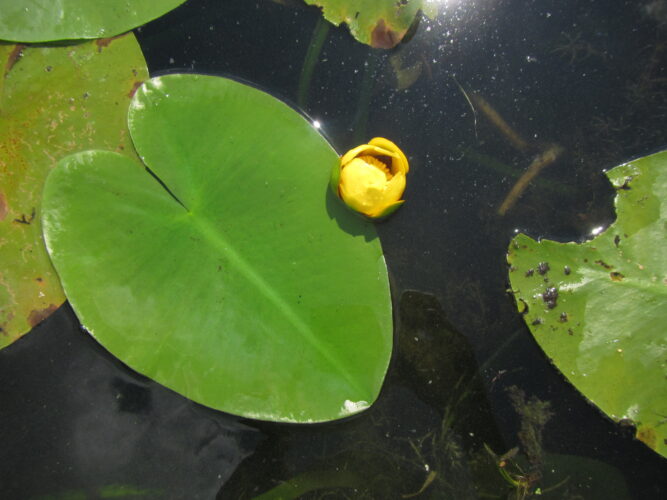
Pond lilies (genus Nuphar)
The pond lily group contains three distinct species—the yellow pond lily (Nuphar advena), the bullhead pond lily (Nuphar variegata), and the dwarf yellow pond lily (Nuphar microphylla)—as well as a hybrid between the latter two called the intermediate pond lily (Nuphar X rubrodisca). Members of this group have heart-shaped leaves with a notch/sinus, and the two lobes tend to overlap. The bullhead pond lily is one of the most common aquatic plants in the state, occurring in hard-water and soft-water habitats, bogs, fens, shallow marshes, and more. The dwarf yellow and intermediate pond lilies are smaller and are primarily found in northern bog lakes. They have a beautiful red center to their flowers. The yellow pond lily is rare in Wisconsin and is concentrated in the southern counties. It has leaves that emerge straight out of the water and round stems (unlike the winged stems of the bullhead pond lily).
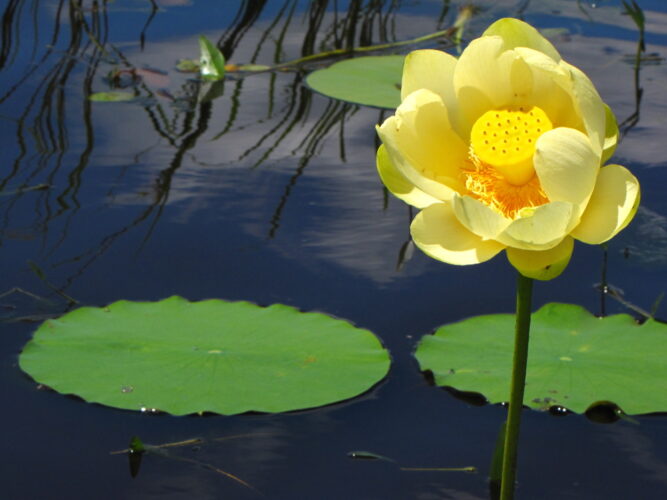
American lotus (Nelumbo lutea)
The American lotus has a strikingly large leaf and flower. You’re most likely to spot it in backwaters or side channels of large rivers like the Mississippi, lower Wisconsin, or Wolf. There are some isolated populations in lakes as well. Lotus leaves are circular but do not have a notch/sinus—they are continuous all the way around. After floating on the surface for a couple of months, the leaves will get shoved skyward by the firm stem, resulting in the leaf being held well above the water in a funnel-like shape. Many botany nerds have been caught splashing water on the leaves in pure delight as they challenge the leaves’ hydrophobic properties.
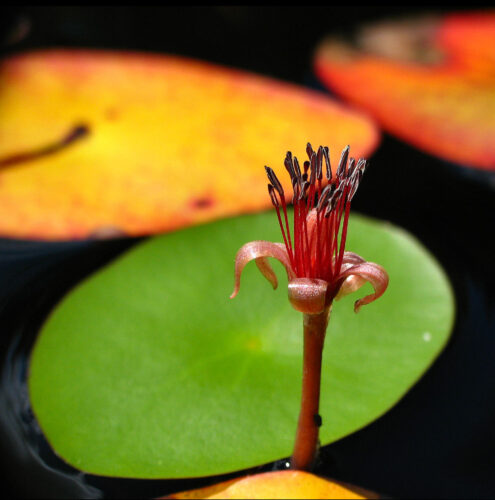
Watershield (Brasenia schreberi)
As my daughter likes to say, this plant is best known for its “slimy sliminess”. The stems and the underside of the leaves are covered in a thick, clear mucus coating that protects the plants against pathogens and herbivores. The youngest growth tends to have the thickest coating of mucus. Expect to see this plant in softwater lakes, bogs, and sedge meadows, primarily in the northern part of the state. You’ll recognize it by it’s small (4-5”), football-shaped leaves that typically grow in large colonies. Tiny, purple flowers poke out between the leaves in July.
Now that you’re armed with some ID tips, get out there and enjoy some slimy watershield, marvel at the beauty of a stand of white water lilies, or accept the lotus’ get-my-leaf-wet challenge.
Paul Skawinski teaches Aquatic Plant Taxonomy and works for the Extension Lakes program at UW-Stevens Point. He is also the author of “Aquatic Plants of the Upper Midwest: A Photographic Field Guide to Our Underwater Forests”. You can order this book from the Extension Lakes online bookstore here.

